Learn to use a 21 computer - Bring important data with you
After you have finished working with documents or files on your computer, it is common for us to save those data right into the computer's hard drive.But sometimes asking for work makes you have to bring the necessary data with you to use at anytime, anywhere.In this lesson, we will talk about two types of data storage so you can quickly access the necessary times from almost anywhere. First, there are some basic concepts that you need to understand:
Flash drive : A flash drive is a type of small hard drive that can be connected via a USB port on your computer.Currently this is one of the cheapest types of storage.Good USB drives for high read speeds are only priced at a few hundred thousand, depending on storage capacity and can be easily purchased at any electronics and technology store.

Cloud storage: Cloud memory means a type of storage where you will upload your data to the service provider's server via an Internet connection. This data will be stored for each user account accordingly. With cloud storage, you can access and use your data from any computer and anywhere, as long as there are Internet connections.

- The best "cloud-based" data storage services available today
Use flash drive
Flash drives make it easy to carry important files and documents with you as portable hard drives.In this respect, the level of convenience is not controversial, but you should also be aware, avoid losing or damaging the flash drive, thereby causing data loss.Ideally, you should still build a specific data backup plan.
How to connect a flash drive:
Plug the flash drive into the USB port on your computer.You will find the USB port on the front, back or side of the computer (location may vary depending on whether you are using a desktop or laptop).
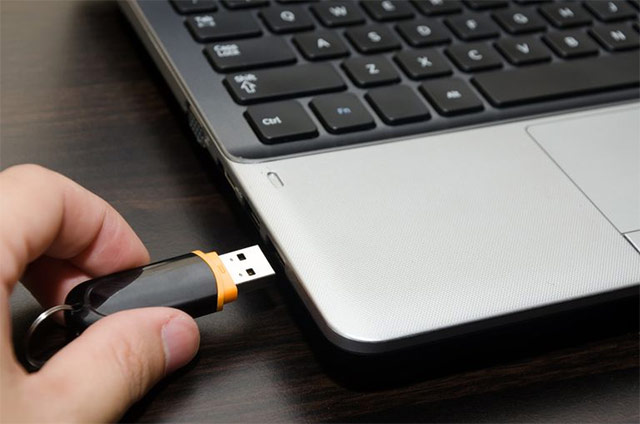
If you are using Windows, a dialog box may appear after plugging the flash drive into the USB port.If you see this dialog box appear, select Open folder to view files .On a Mac, the flash drive icon will usually appear directly on the screen.
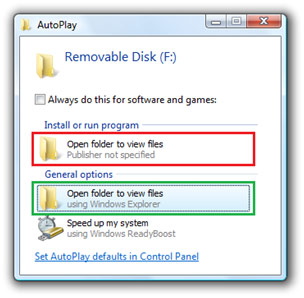
If no dialog box appears, open Windows Explorer, or Finder (if you're using a Mac) and click the flash drive icon on the left side of the window.Note that the name of the flash drive may change and will not be the same.
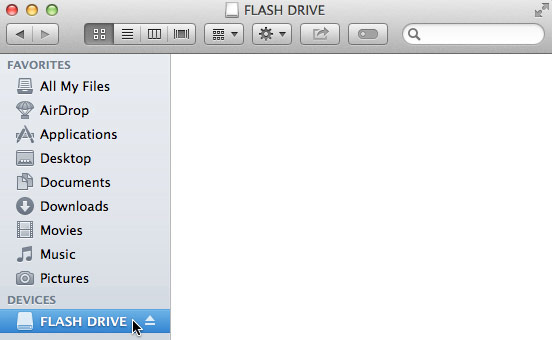
Working with flash drive
Once connected and accessible to the flash drive, you can work with it just like any other folder on your computer, from moving to deleting files.
If you want to copy a file from your computer to a flash drive, click and drag the file from your computer to the flash drive window like this:
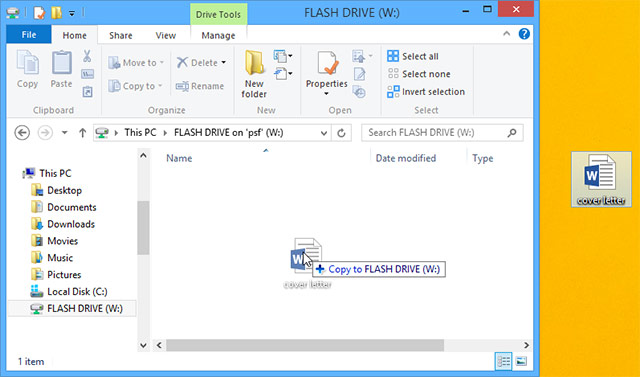
The file will be copied and a copy of the file will be saved to the flash drive.The original version of the file will still be saved to your computer.
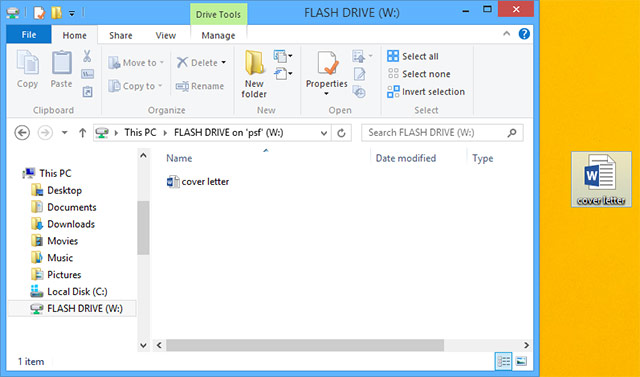
If you want to copy a file from the flash drive to your computer, do the opposite, click and drag the file from the flash drive window to your computer, like this:
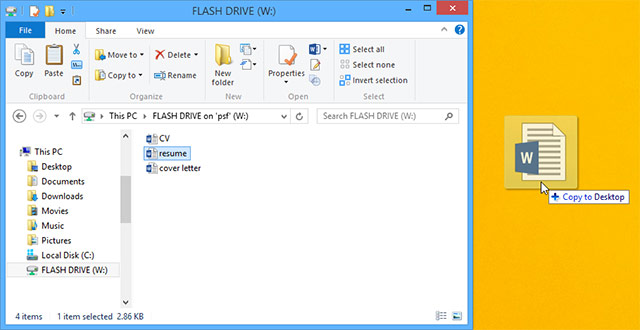
If you want to delete a file from your flash drive, click and drag the file to the Recycle Bin on your PC or Trash can on the Mac.A dialog box may appear.If so, click Yes to confirm that you want to permanently delete the file.
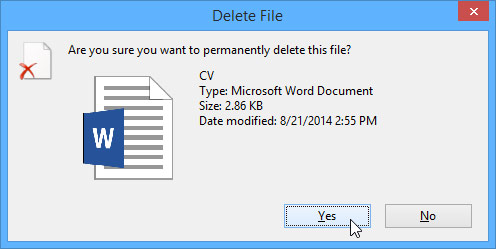
If the dialog box does not appear, you may need to empty the trash to permanently delete the file.
Disconnect the flash drive safely
After you have finished using the flash drive, do not remove it from the USB port immediately, but disconnect the flash drive properly to avoid corrupting the files stored on it.
Right-click on the flash drive and select Disconnect (or Eject ).

Now you can safely remove the flash drive from the USB port.
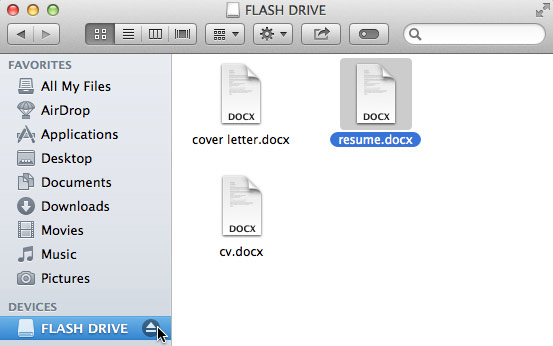
If you're using a Mac, you can also click the Eject button next to the flash drive icon in the Finder.
Store data on the cloud
Currently there are many cloud storage services that allow you to create accounts as well as free storage of documents with a certain amount of storage.You can almost save everything to the cloud, from images, videos to other program files.Some of the most popular cloud storage services include Google Drive, OneDrive and Dropbox.Free storage will come with each new account you create (usually around 15GB), this number is more than enough if you only use your account for personal, business or regular study purposes. .If you own a business or simply need to store a lot of heavy files, you maywant to pay your cloud service providers for more storage as well as managed packages. more professional storage logic.
Unlike physical data storage methods, the cloud cannot be broken or misplaced data, so you don't necessarily have to back up files that you have uploaded to the cloud.Files in the cloud can also be easily shared via an Internet connection, so this storage model is also popular in a modern school today, helping to collaborate with you. friends and colleagues become much more convenient.However, when you decide to save something online, keep in mind that security risks exist, assuming another user can try to access your personal information. You illegally, for example, this is not uncommon.To protect your data, you should plan to set up appropriate protection belts, simply create a strong password and pay attention to security settings and service policies. Cloud storage I am using.

The above is basic information about how you can store and use your data more flexibly.In the next lesson, we will learn how to use accessibility features on a computer.Good luck!
See more:
- How to store data forever?
- The best "cloud-based" data storage services available today
- Collection of the best free online data storage websites today
- The easiest way to reclaim disk space on Windows
You should read it
- How to Recover Data from Broken Laptop Hard Drive
- Know about bad sectors on your hard drive
- Methods to expand storage memory for computers quickly
- Learn to use lesson computer 16 - Protect your computer
- Free tools for backing up data securely for your computer
- How to Transfer Data from a Flash Drive to a Computer
 Learn to use the ultimate lesson calculator - Use accessibility features
Learn to use the ultimate lesson calculator - Use accessibility features Should I plug in the laptop charger continuously?
Should I plug in the laptop charger continuously? Should I use a laptop or phone screen cleaner?
Should I use a laptop or phone screen cleaner? How to use Wandriver to update computer drivers
How to use Wandriver to update computer drivers Fix the inactivity laptop keyboard error
Fix the inactivity laptop keyboard error How to install and use SSDs for laptops
How to install and use SSDs for laptops